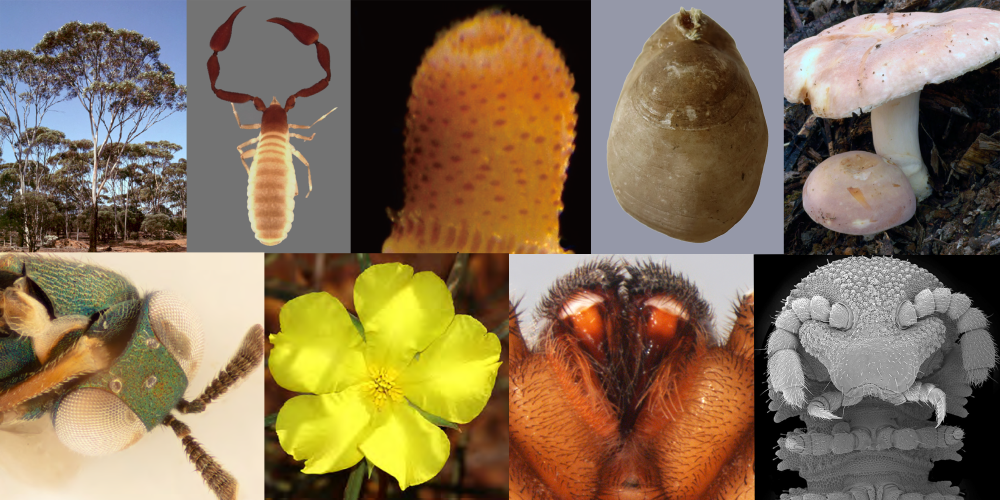Media release
From:
Australian Journal of Taxonomy (AJT) is a freely accessible, online journal devoted to the rapid publication of formal descriptions of new species and records of Australian animals, algae, fungi, plants and other organisms.
The journal commenced in May 2022 after Australia-wide community discussions about a mission to fully document the Australian biota within a generation.
This mission arose out of the development of the Decadal Plan for Taxonomy and Biosystematics in Australia and New Zealand [https://www.science.org.au/support/analysis/decadal-plans-science/discovering-biodiversity-decadal-plan-taxonomy], sponsored by the Australian Academy of Science [https://www.science.org.au/].
Taxonomy Australia [https://www.taxonomyaustralia.org.au/] is the organisation set up to take carriage of the Decadal Plan. Taxonomy Australia initiated Australian Journal of Taxonomy as a concrete step to accelerating the formal description of Australia’s biota.
The 100th issue of Australian Journal of Taxonomy – published today – documents 12 previously undescribed species of native bees [https://www.taxonomyaustralia.org.au/ajt/papers/aiuovkov8m]. Previous publications of the Australian Journal of Taxonomy dealing with Australian bees include an issue on the resin pot bees [AJT resin pot bees] in which 71 new species were described.
Bees are important components of the native ecosystems, providing vital ecosystem services by pollinating plants. Documenting the Australian bee fauna is an important step towards understanding their unique role. Scientists estimate that around 1,600 species of native bees have been discovered and documented in Australia so far, but perhaps more than 1000 species still remain undiscovered, unnamed and undocumented.
The author of the 100th paper, Dr Michael Batley (Research Associate Entomology and Arachnology at the Australian Museum) considers that: “The rich diversity of Australia’s bee fauna is relatively well catalogued compared to many other insect groups. And yet, within the last two years, 137 new species have been added to the species previously named. This paper adds more new and unusual species to the genus Leioproctus, which is one of the more complex and varied genera, with many more unnamed species yet to be described.”
Other AJT issues produced so far document plants such as heaths, mints, daisies, palms, guinea flowers and gum trees; and fungi including mushrooms and microfungi. Among the animal kingdom, there are papers on vertebrates, such as geckoes, snakes, dragon lizards and turtles; with the bulk of papers dealing with invertebrates, covering trapdoor spiders, orb-weaving spiders, wolf spiders, wishbone spiders, stiletto flies, hoverflies, dung beetles, rove beetles, weevils, cave crickets, assassin bugs, wasps, pseudoscorpions, water mites, octopods, sipunculids, brachiopods and butterflies.
According to Mark Harvey (Editor-in-Chief Australian Journal of Taxonomy, Western Australian Museum) “Since we launched the journal, we’ve been pleased to see the acceptance from scientists studying the taxonomy of the Australian biota – and the range of species covered. Already, AJT has published treatments of more than 300 species, mostly new, and ten new genera. The discovery of new genera (a genus is a larger taxonomic grouping that may include one or more species) demonstrates that the true diversity of the Australian biota is still being refined”.
The journal operates from a web-based system developed specifically for the journal by Associate Editor Kevin Thiele. Kevin’s vision is “a platform that can be scaled up to deal with the thousands of new species that we know are out there, and which offers the promise of seamless integration into other biodiversity portals”.
Current Director of Taxonomy Australia, Dr Tom May (Royal Botanic Gardens Victoria) comments that: “We need step changes in the way we document species, to make the mission to fully document Australia’s biota happen within a generation. The journal is one of a number of key tools that are assisting with getting stuck into the task, especially for hyperdiverse groups such as fungi and invertebrates”.



 Australia
Australia


